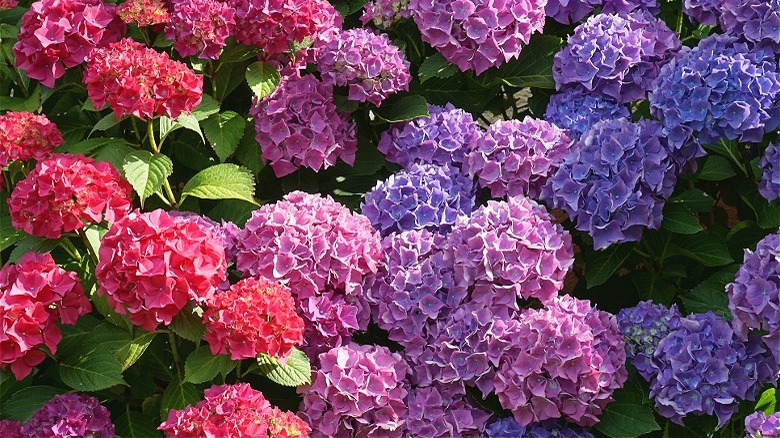Hydrangeas are gorgeous plants that will elevate any flower garden, but if you have curious pets or children, it’s important to be cautious. Surprisingly, hydrangeas can be toxic if ingested by mammals, so if you have a dog that likes to munch on plants or a toddler that will put anything in their mouth, keep them away from these plants.
Hydrangeas contain amygdalin, and though this chemical isn’t harmful on its own, when metabolized, it turns into cyanide. Every part of the plant has amygdalin in it, meaning the consumption of a hydrangea’s leaves, flowers, or stem could lead to cyanide poisoning. While it is unlikely that a child or pet would consume enough of the plant for it to be lethal, exposure to cyanide can cause diarrhea, vomiting, and confusion in animals and humans. Problems breathing, headache, changes in heart rate, and dizziness are also symptoms seen in people who’ve encountered small quantities of cyanide.
What to do if your pet or child has eaten hydrangeas

Pixabay
If your child has ingested any part of your hydrangea plant, watch to see if they develop any symptoms or if they’re acting differently. Call poison control immediately if any symptoms arise and follow their instructions. For pets that have eaten hydrangeas, symptoms present in about half an hour. If your pet shows no signs after this amount of time, they probably didn’t consume enough to affect them, but if any symptoms arise, take your pet to your veterinarian right away. It can be helpful for diagnosis to bring a cutting of the plant to your vet.
Taking your child or pet to a medical professional as soon as you notice something is wrong will help keep them safe. In humans, cyanide poisoning is treated with antidotes, and the CDC recommends you avoid inducing vomiting. While small amounts of hydrangeas may not be harmful, it’s important to keep your children and pets away from this plant.
How to keep hydrangeas away from curious kids and pets

Children and pets are naturally inquisitive, so it’s a good idea to ensure your hydrangeas are out of reach. If your hydrangeas are along the edges of your property, try making these areas of your yard off-limits. Fencing can also be used to deter kids and pets from reaching these potentially toxic plants. For cats that seem to get into everything, try placing netting over your hydrangeas. Promptly removing any flowers or leaves that have fallen from the plant is another good safety measure.
If you keep hydrangea flowers indoors, make sure they’re stored at a height that kids and pets can’t reach. Pets are sometimes persistent when they find a plant they like to eat, and some companies sell bitter sprays to deter them, like this one from Amazon. You may also try planting petunias, roses, or marigolds instead of hydrangeas.



